Try OpenCV, it stands for Open Computer Vision. It’s free. This is written in Python.
import cv2
import numpy as np
img = cv2.imread("C:\\Users\\mogar\\Desktop\\temp.jpg")
grayImage = cv2.cvtColor(img, cv2.COLOR_BGR2GRAY)
ret, thresh = cv2.threshold(grayImage, 160, 255, cv2.THRESH_BINARY)
kernel = np.ones((5,5),np.uint8)
thresh = cv2.erode(thresh,kernel,iterations = 1)
#thresh = np.invert(thresh)
cv2.imshow("Threholded Image", thresh)
cv2.waitKey(0) & 0xFF == ord('q')
cv2.destroyAllWindows()
_, contours, hierarchy = cv2.findContours(thresh, cv2.RETR_TREE, cv2.CHAIN_APPROX_NONE)
for cnts in contours:
rect = cv2.minAreaRect(cnts)
box = cv2.boxPoints(rect)
box = np.int0(box)
(x,y),(w,h),angle = rect
w = int(w)
h = int(h)
area = w*h
if area > 10000 and area < 100000:
print("Area Check", area)
cv2.drawContours(img, [box], 0, (0,0,255), 5)
small = cv2.resize(img, (0,0), fx=0.3, fy=0.3)
cv2.imshow("Contours", small)
cv2.waitKey(0) & 0xFF == ord('q')
cv2.destroyAllWindows()

You may need to adjust some of the threshold values and area values so that you'll be enclosing only the rectangles. You'll notice the rectangles are not fully enclosed right now, that is literally because the text is getting in the way and cutting the rectangles in half. If you had a clean image; I'm sure this would work great. If you have any questions please don't hesitate the ask, but it may take some time before I can answer.
 3 different imagens with the "same" retangle to be found
3 different imagens with the "same" retangle to be found